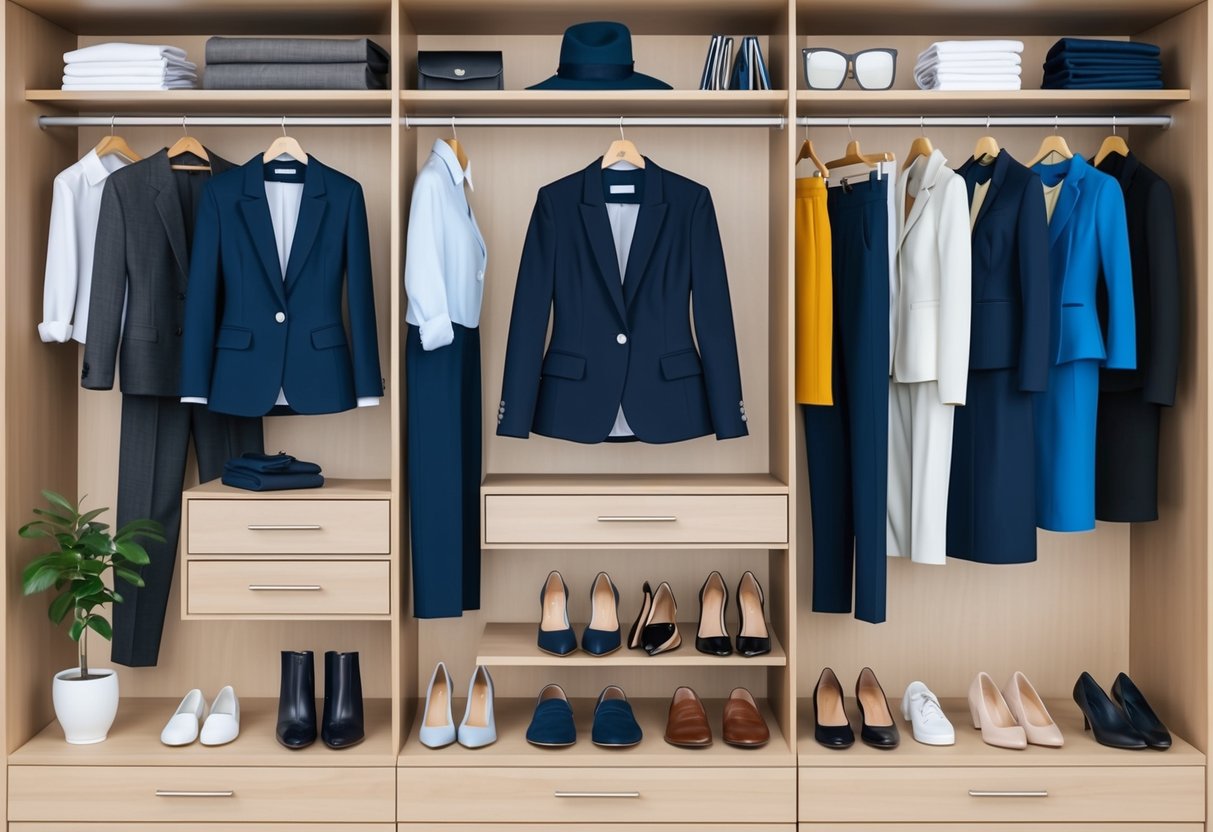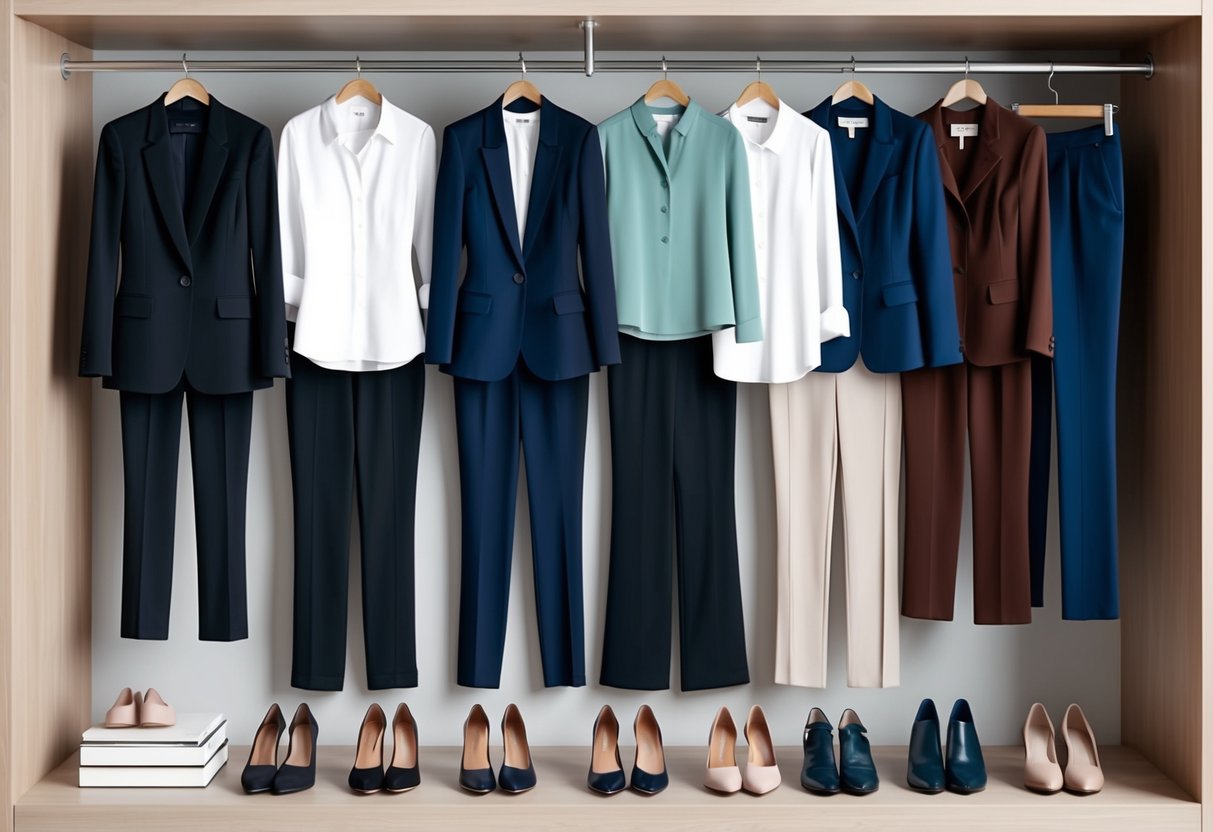
Cultivating Confidence and Professionalism Through Style

Confidence at work is influenced by both personal comfort and outward appearance. When someone feels good in their clothing, it supports a stronger sense of professionalism and helps leave a lasting, positive impression.
Final Touches for a Professional Appearance
Attention to detail is essential for creating a polished look that supports both confidence and credibility. Neatly pressed clothing, clean shoes, and carefully chosen accessories all contribute to a professional image.
Investing in versatile pieces like tailored blazers, structured trousers, and high-quality blouses makes it easier to build combinations that look pulled-together and intentional. A subtle color palette (navy, black, gray, white) can be elevated with a pop of color through accessories such as a scarf or handbag.
Minimal jewelry, a classic watch, and a well-maintained hairstyle also make a difference. Keeping nails clean, makeup understated, and shoes in good repair signals reliability and self-respect.
These details show attention to grooming and self-presentation, which communicates both competence and professionalism. For women, layering with tailored jackets or structured cardigans can add polish without sacrificing comfort.
Seasonally appropriate fabrics, such as wool in winter or lightweight cotton in warmer months, further enhance both appearance and comfort in the workplace. For more tips, dressing for professional success can make a significant impact on perception at work.
Expressing Individuality in a Professional Setting
Personal style does not have to be set aside to achieve a professional appearance. Employees can showcase individuality by incorporating distinct patterns, subtle prints, or a signature accessory while remaining work-appropriate.
Tailoring outfits to fit body shape while maintaining modesty and workplace standards helps balance uniqueness with professionalism. Selecting a few signature items, such as a statement necklace, bold eyeglasses, or a distinctive belt, allows personality to shine subtly.
Mixing modern items with classic wardrobe staples creates visual interest and avoids monotony. Companies are increasingly accepting smart casual attire that emphasizes a blend of comfort, style, and professionalism.
A curated wardrobe should still prioritize fit, fabric, and formality, ensuring individual touches enhance rather than distract from workplace standards. Expressing individuality within professional guidelines helps build confidence, supports authentic self-expression, and allows people to feel comfortable and poised throughout the workday.
Frequently Asked Questions
What are the essential items to include in a capsule wardrobe for a professional setting?
A professional capsule wardrobe typically contains neutral blazers, tailored trousers, pencil skirts, classic button-down shirts, and versatile dresses. Shoes such as loafers, minimalistic pumps, or clean-lined flats are recommended for daily use.
Outerwear like a structured coat or trench helps maintain a polished look in colder seasons. Silk shells, wool blazers, and cotton cardigans enhance layering options.
Sticking to quality over quantity allows every item to mix and match easily for various workplace scenarios. For more details on building a business-ready capsule, see this guide on creating a capsule wardrobe for work.
How can one maintain comfort without compromising professionalism in their work attire?
Select comfortable, natural fabrics like cotton or wool that offer breathability and stretch. Opt for clothing with relaxed tailoring—think less restrictive fits but still well-structured jackets and pants.
Adjustable waistbands, soft blouses, and low-heeled shoes further improve day-long comfort. Layering cardigans and using wrinkle-resistant textiles help balance ease and a put-together appearance.
Specific clothing recommendations and comfort-focused tips can be found in this workwear comfort guide.
What is the 3-3-3 rule and how does it apply to creating a work wardrobe?
The 3-3-3 rule involves rotating three tops, three bottoms, and three layers or pairs of shoes every three months. This approach encourages mindful purchasing and ensures maximum outfit variety from a minimal set of pieces.
It helps keep a closet organized and eliminates rarely used items. This method also streamlines the morning routine and prevents decision fatigue.
Regularly updating pieces in the rotation maintains an appropriate and modern professional image.
How can men curate an office wardrobe that is both stylish and functional?
Men should focus on versatile basics such as crisp button-up shirts, tailored chinos or wool trousers, and one or two quality blazers. Neutral colors like navy, gray, black, and white provide a foundation for easy mixing and matching.
Knitted ties, leather dress shoes, and minimal belts serve as refined accessories. Polo shirts and fine-gauge sweaters add flexibility for business-casual days.
Choosing natural fibers and ensuring each item fits properly increases both comfort and professionalism.
What are the key pieces for building a young professional’s wardrobe for women?
Young professionals benefit from a few fitted blazers, knee-length skirts, and straight-leg or slim-fit trousers. Neutral or subtle-patterned blouses, simple shift or wrap dresses, and a basic trench coat add variety.
Closed-toe flats or modest heels complete most looks. Starting with shades like black, beige, gray, or navy allows for coordinated outfits and a chic, timeless aesthetic.
For guidance on tailoring this wardrobe to both workplace norms and age-appropriate trends, this article discusses how to build a professional closet.
Which items should be prioritized when adhering to the 70/30 wardrobe rule for work environments?
The 70/30 wardrobe rule advises investing 70% of the budget on classic staples and 30% on trendier, personal pieces.
Essentials such as blazers, trousers, pencil skirts, and solid tops—items frequently worn—should receive priority.
The remaining 30% allows for statement jewelry, colorful tops, or patterned shoes to add individuality without overwhelming the overall professional appearance.



